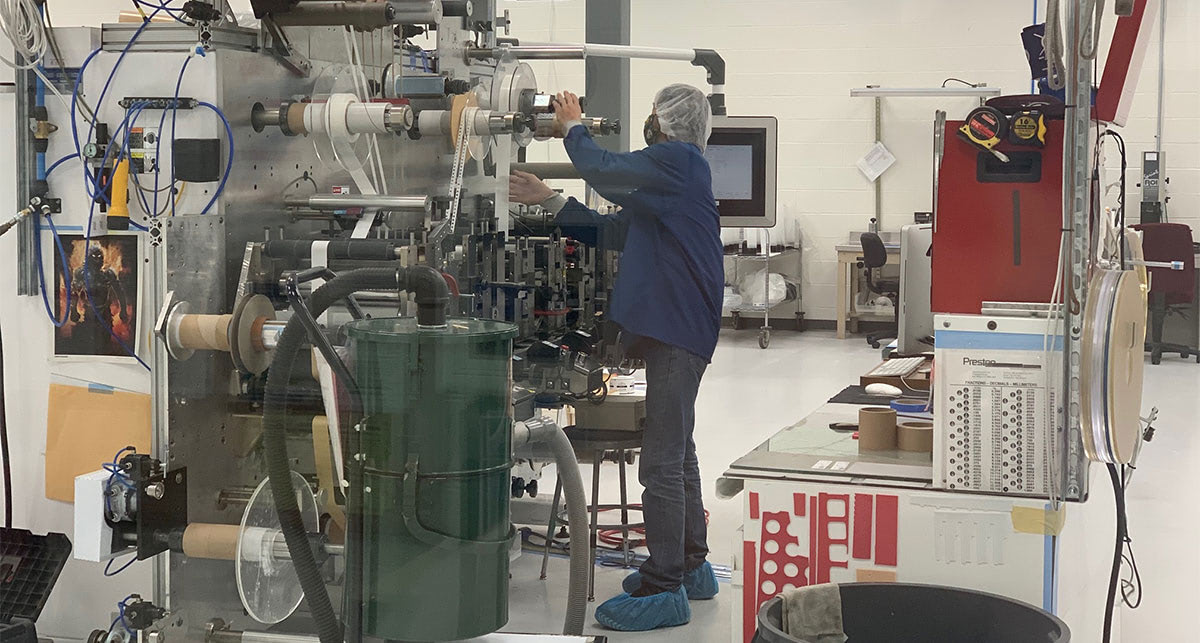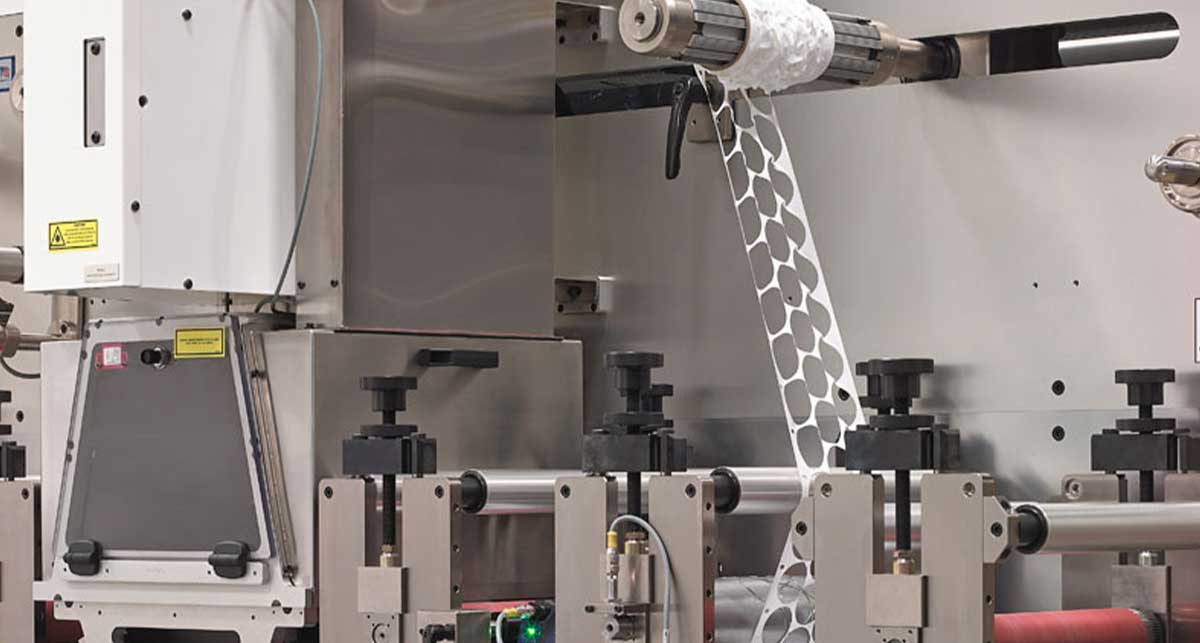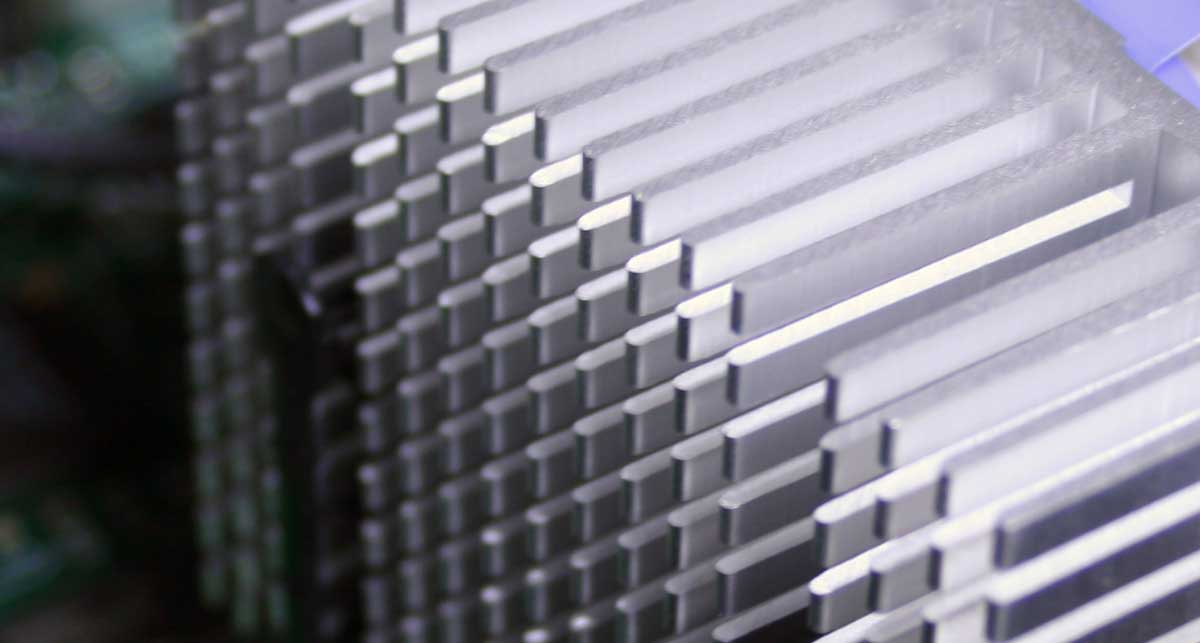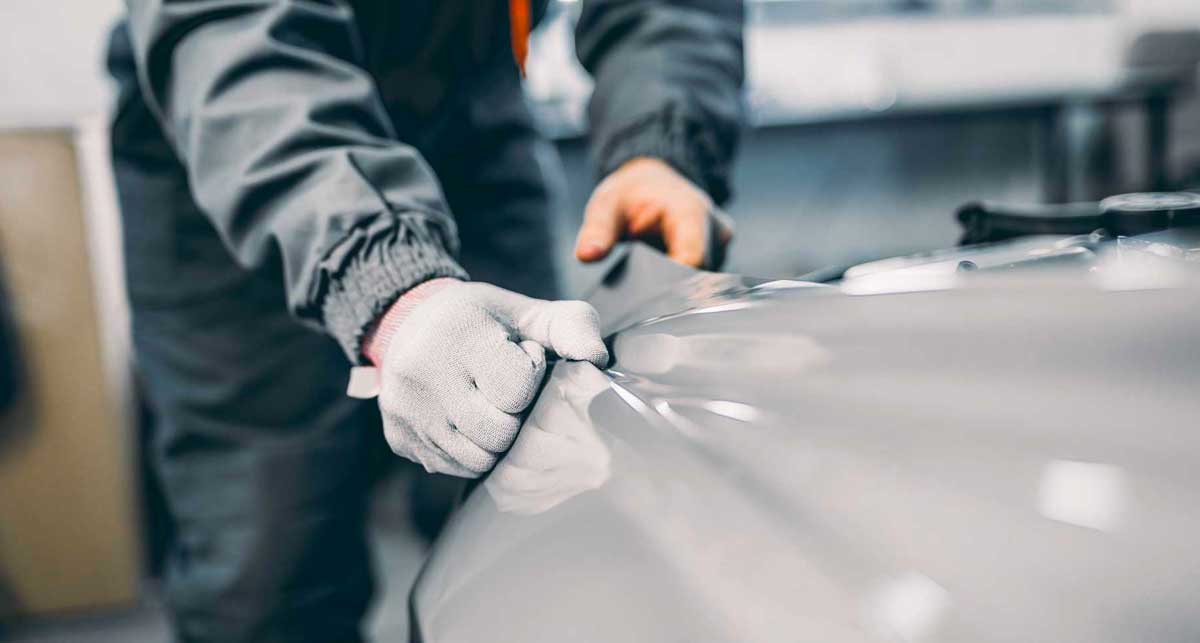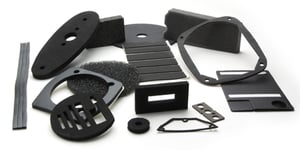When your product requires superior barrier and bonding features, gaskets might be ideal. However, they’re far from one-size-fits-all.
While many gaskets are made of flat materials such as paper, rubber, metal, silicone, felt, or neoprene, there are many applications in which using foam can provide powerful sealing capabilities.
Over the past 34+ years, Strouse has helped our customers create a wide range of custom gaskets.
Today, we're taking a closer look at how foam gaskets work so that you know whether they suit your application. Read on to discover when to use foam gasket tape and its different types.
What Are Foam Gaskets?
Foam gaskets are used between two hard surfaces to improve the characteristics of a given mechanism. Manufacturers rely on them to perform the following functions, among others:
- Insulation
- Cushioning
- Weather Resistance
- Noise reduction
- Electrical absorption
- Fluid restriction
OPEN CELL VS. CLOSED CELL FOAM GASKETS
If you’re considering which type of foam gasket is best for your application, you’ll need to understand the difference between open cell and closed cell varieties.
Open cell foam gaskets are primarily used in applications where shock or vibration is present and reduction is required. Conversely, closed cell foam gaskets are often used in applications susceptible to environmental conditions (like water, solvents, contaminants, etc.). In this case, environmental sealing is required to protect the mechanism from the elements.
What is Foam Gasket Tape Used For?
Gasketing materials don’t always come in traditional sheet form.
In many cases, narrow sealing tape is better suited for the application. Just like how weatherstripping tape can help keep the heat and chill out of your home, foam tape can keep unwanted substances out of a given device or piece of equipment.
Many foam gasket tapes serve as permanent bonds, which act as a lightweight alternative to metal screws and rivets.
When you use tape instead of mechanical fasteners, you can better distribute the stress load across the entire length of the tape rather than concentrating it on the individual fastener. Foam tape is also lighter than those tools and less prone to age-related failure.
On the other hand, removable foam tapes can be used to temporarily mount or display items that you intend to remove or reposition later.
FOAM GASKET TAPE INDUSTRIES
Foam tape is increasingly being used as a go-to gasketing material, creating strong bonds and attachments in many different industries.
MEDICAL INDUSTRY
Manufacturers in the medical industry use foam gaskets to bond devices together within medical components. In addition, they use foam tapes to secure protective, cushioned dressings to the skin.
ELECTRONICS INDUSTRY
As LCDs and touchscreens continue to proliferate the electronics industry, many manufacturers turn to foam tape to ensure components are reliable and protected. Foam tape is strong, accurate, and effective when bonding assemblies and attaching multiple components.
AUTOMOTIVE INDUSTRY
Automotive manufacturers use foam tape to attach sidewall panels to heavy-duty automobiles that see a significant amount of wear and require durability, such as commercial or public service vehicles.
6 Different Types of Foam Gasket Materials
You’ll find foam materials with a broad range of specifications regarding hardness, thickness, density, and color. But, to help you choose, we’re examining a few of the most potential materials you can choose from when selecting your gaskets.
1. SILICONE FOAM
Silicone foam gaskets begin as low-viscosity liquid silicone, which manufacturers cast on a liner and cure through an inline oven. You can find silicone foam in open cell, closed cell, or a combination of both.
Lightweight in density with optimal flame resistance, silicone foam boasts a lower compression set than a typical silicone sponge. A few of the ways you can use this type of foam gasket include:
- Within outdoor sealing enclosures
- Within specific lighting enclosures
- To protect devices against vibration
- To protect and seal communications and electronics equipment
- To protect devices from shock and heat
Regardless of your chosen application, these materials can come equipped with a high-temperature acrylic adhesive. They're also available in custom, die-cut designs.
2. POLYURETHANE FOAM
Polyurethane foam tape is open cell and flexible. More cost-effective than other materials on this list, it's also a cinch to cut. Its durability and design make it appropriate for a range of applications, including:
- Dust and moisture sealing
- Component cushioning
- Thermal insulation
- Acoustic insulation
You can find polyurethane foam in both fire retardant and anti-static forms. While it's typically available as a light, charcoal gray, you can also request custom colors to fit your application. You can also affix pressure-sensitive adhesive backing and other special coatings onto these gaskets as required.
3. POLYETHYLENE FOAM
Foam gaskets are also available in polyethylene foam tape. While all polyethylene is closed cell, this foam is usually available in two configurations:
- Expanded polyethylene foam
- Cross-linked polyethylene foam
The expanded model is strong and resistant, acting as a formidable foe against chemicals and grease. Naturally resistant to mold and mildew, it's used in a range of packaging applications. It's also vibration-resistant.
The cross-linked model features polyethylene foam that has been chemically cross-linked.
Compared to traditional polyethylene foam, this material has a smoother, more uniform finish. It also has more robust physical and chemical properties. Gaskets made with cross-linked foam possess excellent mechanical and thermal insulation, as well as chemical resistance.
You can find polyethylene foam in conductive, anti-static, and fire-retardant forms. While it's usually available in black and white, custom colors are available.
4. URETHANE FOAM
Urethane foam is a low-density and open cell material. It offers excellent thermal and acoustic insulation, sealing, vibration resistance, energy absorption, and sound dampening. Because these gasket seals have a high level of resilience, they won’t break down as much over time.
This material is flexible and easy to fabricate and die cut. You'll most commonly find it in applications that undergo a substantial amount of wear and tear, including:
- Automobiles
- Appliances
- Electronics
- Industrial devices
5. NEOPRENE FOAM
Closed cell neoprene foam is highly versatile. It tends to have a lower density than other materials, along with improved water absorption properties. This type of foam is soft, durable, and form-fitting.
As such, neoprene foam gaskets are commonly used in applications that require strong thermal and moisture insulation.
6. VERY HIGH BOND (VHB) TAPE
3M’s double-sided VHB adhesive foam tape is a highly powerful, acrylic pressure-sensitive adhesive.
This type of closed cell foam can provide both permanent and temporary bonding and makes an excellent gasketing material. It's ideal in applications that require permanent substrate bonding where traditional fasteners aren't preferred due to the stress points that puncturing would create.
The family of 3M VHB foam tape offers a greater degree of durability and elasticity compared with other similar double-sided foam tape options. It also resists sealants and saltwater, ensuring top sealing and bonding capability in extreme weather conditions.
Though 3M VHB foam tape is used in a variety of settings, from the healthcare field to the construction sector, it’s especially beneficial to the electronics industry. 3M VHB tape seals out moisture effectively and helps prevent galvanic corrosion between dissimilar metal surfaces.
How to Select the Right Foam Gasket For Your Needs
You know that you need the flexibility and durability of a foam gasket, but with so many options at your fingertips, you might be unsure where to turn. This is where it’s helpful to know the characteristics you want in your gasketing material.
UNDERSTAND THE GASKET FUNCTION
How do you intend to use your gasket? The answer can help you narrow your options to open or closed cell foam.
Are you looking for a gasket that will keep its shape even after constant use?
Moreover, do you want a component that can serve as a powerful and effective barrier against wind, dust, and debris? In this case, an open cell foam gasket is a smart place to start.
On the other hand, closed cell foam gaskets are ideal when strength and moisture resistance are your top concerns.
DETERMINE THE APPLICATION
To create a robust seal, you need to know the various factors that the gasket needs to withstand. A few of the most common data points to know include:
- Operating temperature
- Internal pressure
- UV and ozone exposure
- Media (the fluid or gas that the gasket will be exposed to)
In addition, there might be other industry-specific parameters that will help guide you toward a specific type of foam gasket.
Automotive, aerospace, and industrial manufacturers may need to consider EMI (electromagnetic interference) standards. At the same time, food and beverage (F&B) manufacturers might be more concerned that the gasket complies with regulations from the U.S. Food and Drug Administration (FDA), NSF (National Sanitary Foundation), or WRAS (Water Regulations Advisory Scheme).
GET THE RIGHT SIZE AND SHAPE
Of course, any time you require a gasket for your application, it's essential to select the correct size and shape required. You'll find a large selection of components in various dimensions.
To ensure that your machine operates at peak efficiency and the gasket creates a fully operational seal, you can't afford to under- or over-measure. It's worth taking the time to get your design tolerances correct, as it will determine the performance of the equipment.
When you’re working with a flexible material converter to build a part, you’ll want to give them as many specifications as possible to help them make it accurately.
Finding Foam Gaskets and Foam Tape
As much as you know about gaskets, at the end of the day, choosing the right bonding material can take some trial-and-error testing.
Now that you know more about the types of foam gasket tape, you’re ready to decide whether they might suit your project.
If you’re interested in testing out product components, consider getting a sample of your product drawing. Otherwise, feel free to check out other gasketing resources in our Learning Center.
Originally published: May 8, 2020
.jpeg?width=290&name=0%20(1).jpeg)
